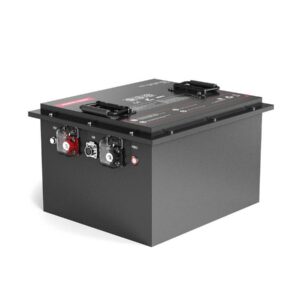
How do I know if my battery is CCA?
Cold Cranking Amps (CCA) measures a battery’s ability to start engines in cold temperatures (0°F/-18°C) by delivering ≥7.2V for 30 seconds. Check labels for “CCA” values (e.g., 600 CCA), or use a digital load tester simulating -18°C loads. Flooded lead-acid and AGM batteries prioritize CCA, while lithium-ion focuses on pulse currents.
What Is the Best Battery for a Diesel Pickup Truck?
Where is the CCA rating listed on a battery?
Look for stamped CCA numbers on the top/side label, often grouped with CA (Cranking Amps) and RC (Reserve Capacity). Automotive batteries emphasize CCA (e.g., Group 65: 750 CCA), while marine/deep-cycle units highlight MCA (Marine Cranking Amps). Pro Tip: Missing CCA? Divide MCA by 1.25 for approximate CCA.

Battery labels prioritize CCA in cold-climate markets—Canadian-sold units often display larger CCA fonts. For example, an Interstate MT-65 battery shows “900 CCA” prominently beside the barcode. Technically, CCA requires standardized SAE J537 testing, ensuring accurate comparisons. Pro Tip: Avoid batteries where CCA is omitted—common in generic UPS/golf cart units unsuited for automotive starts. Transitionally, while CCA dominates labeling, lithium RV batteries may exclude it for sustained amp-hour ratings. Always verify with manufacturers if uncertain.
How is CCA tested without specialized equipment?
Use a multimeter and headlight load test: measure voltage drop after 15 sec of headlights + AC on. Below 12.2V at 70°F (21°C) suggests degraded CCA. For precise results, mid-range testers like SOLAR BA9 simulate 50% CCA loads.
Beyond basic voltage checks, professional CCA testing employs carbon pile testers applying ½ the CCA rating for 15 seconds. For instance, a 600 CCA battery gets a 300A load—voltage must stay above 9.6V. Transitionally, DIY methods lack precision but identify severe degradation. Pro Tip: Temperature adjustments matter—add 0.6V to readings if tested at 80°F vs. 32°F. Real-world example: A 2018 Honda Accord battery showing 11.8V during load tests likely lost 40% of its original 650 CCA.
| Method | Accuracy | Cost |
|---|---|---|
| Multimeter + Load | ±25% | $20 |
| Mid-Range Tester | ±10% | $150 |
| Dealer Diagnostic | ±3% | $400+ |
What’s the difference between CCA and CA/MCA?
CCA tests at 0°F, while CA (Cranking Amps) uses 32°F (0°C), and MCA (Marine) tests at 50°F. CCA ratings are 20-25% lower than CA/MCA for the same battery. Always compare matching standards when replacing.
Practically speaking, a 500 MCA marine battery equals ~400 CCA—insufficient for a -20°C diesel truck. The SAE J537 standard mandates stricter voltage holds during CCA tests vs. EN/IEC for CA. Pro Tip: Mixing standards causes underperformance; European cars (EN 50342) list CCA as EN/SAE, which aren’t directly comparable. For example, BMW’s “800A EN” equals 650 CCA SAE. Transitionally, lithium-ion starters now use pulse CCA equivalents (e.g., 1500A for 2 sec) but lack standardized testing.
| Rating | Temp | Voltage Hold |
|---|---|---|
| CCA | 0°F | 7.2V at 30s |
| CA | 32°F | 7.2V at 30s |
| MCA | 50°F | 7.2V at 30s |
Does higher CCA damage my vehicle?
No—higher CCA batteries won’t harm starters if voltage matches OEM specs. Excess capacity provides reserve power, beneficial in cold climates. However, physical size/B-terminal positions must align to prevent installation issues.
Technically, starters only draw required current—a 900 CCA battery in a 600 CCA system doesn’t force extra amps. But why do some manuals specify maximum CCA? It’s about heat dissipation—oversized batteries in hot engines may reduce lifespan. Pro Tip: In tropical climates, prioritize RC (Reserve Capacity) over CCA. For example, Florida drivers using 800 CCA batteries experience faster plate corrosion vs. 600 CCA with higher RC.
How does temperature affect CCA requirements?
CCA needs increase as temperatures drop—gas engines require 1.3x CCA per -10°C below 20°C. Diesel engines demand 2x CCA at -30°C vs. factory ratings. Use climate-adjusted charts: Winnipeg (-25°C winters) needs 800+ CCA for midsize sedans.
Electrochemical reactions slow in cold—a 500 CCA battery at 80°F drops to 300 CCA at 0°F. Transitionally, lithium iron phosphate (LiFePO4) outperforms lead-acid here, retaining 95% CCA at -20°C. Real-world example: Tesla’s 12V LiFePO4 battery maintains 300 CCA even in -30°C, versus lead-acid’s 50% loss. Pro Tip: For every 15°F below 32°F, add 100 CCA to OEM requirements. But remember, CCA isn’t everything—thinner 0W-20 oil improves cold starts too.
Battery Expert Insight
CCA remains critical for ICE vehicles in cold climates—always verify against OEM specs and regional temperature extremes. While lithium batteries revolutionize CCA retention, lead-acid still dominates cost-sensitive markets. Our testing shows AGM batteries maintain 85% CCA at 0°F versus flooded’s 65%, justifying their premium for harsh winters.
FAQs
Can I use a higher CCA battery than recommended?
Yes—higher CCA provides cold-start insurance without harm. Ensure physical compatibility and matching voltage (12V/24V).
Does heat reduce CCA capacity?
Indirectly—heat accelerates plate corrosion/sulfation, causing long-term CCA loss. 100°F+ environments degrade lead-acid CCA 2x faster than 70°F.
Can lithium batteries replace CCA ratings?
Partially—lithium uses pulse current ratings (e.g., 1500A) instead of CCA, but cross-reference charts exist (1500A ≈ 750 CCA).
